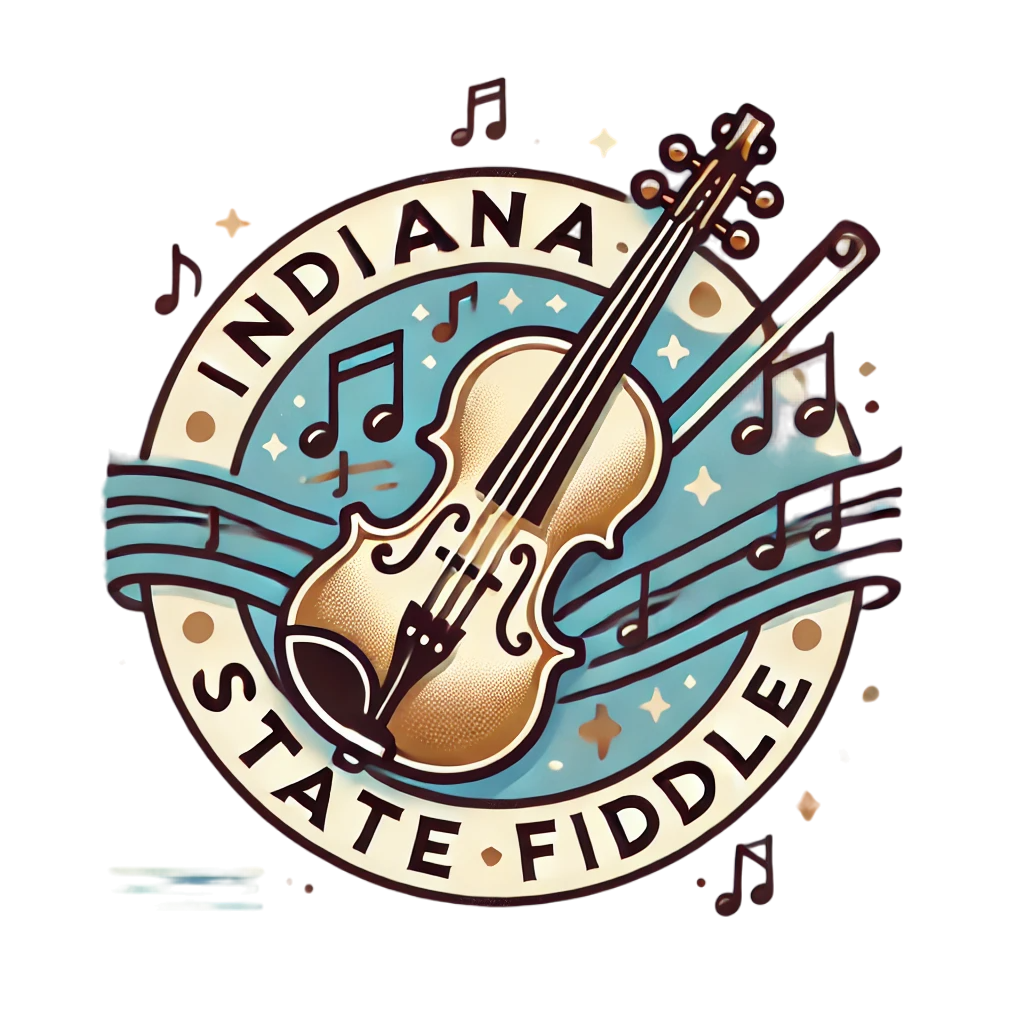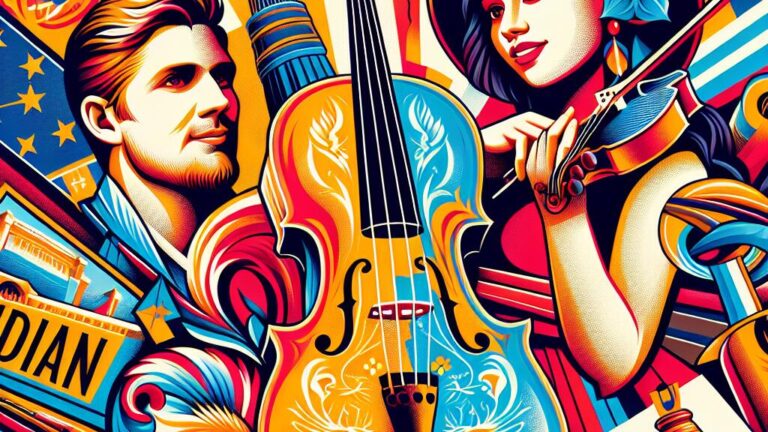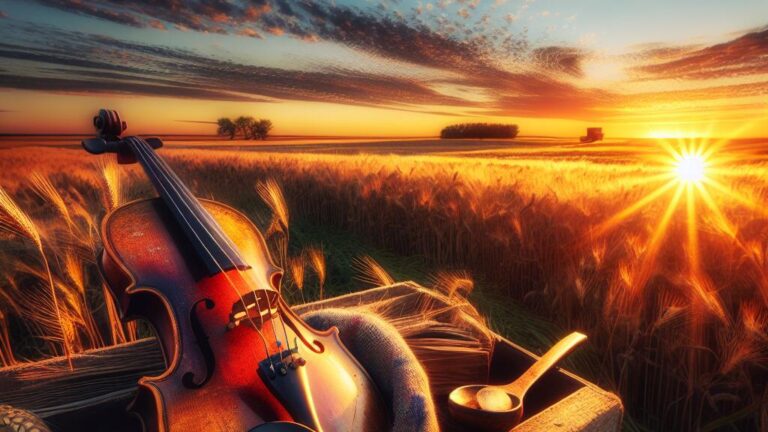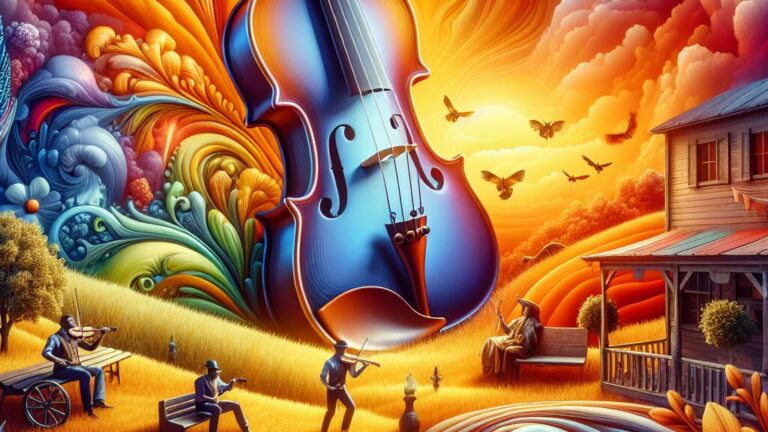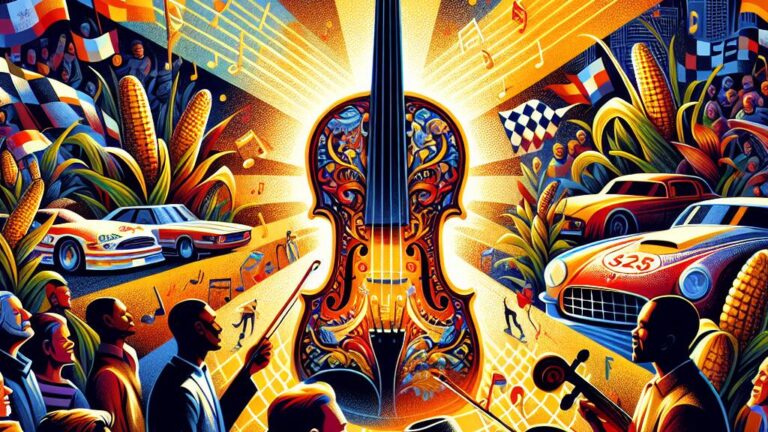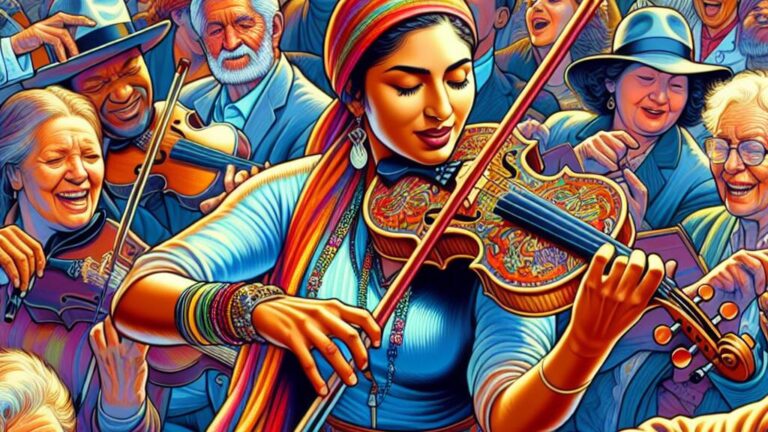What are the different types of Indiana State Fiddles?
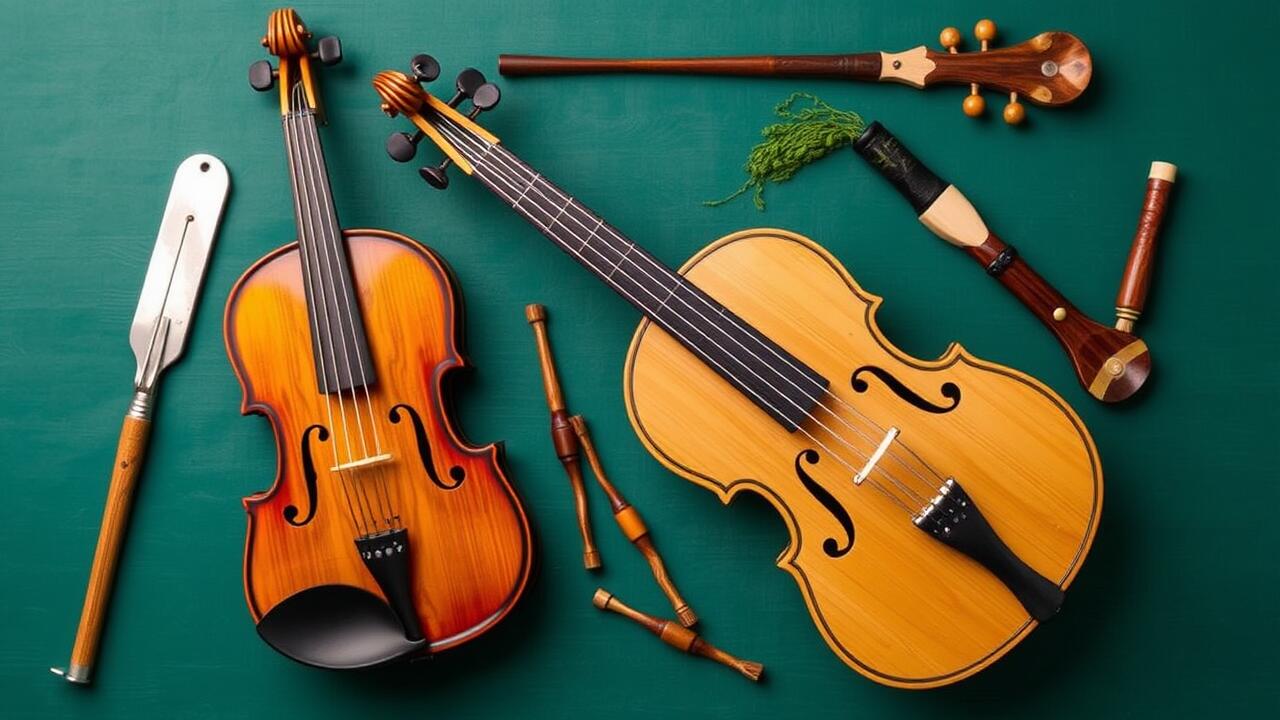
Table Of Contents
What Are the Different Types of Indiana State Fiddles?
What Are The Different Types Of Indiana State Fiddles? | Overview of Indiana State Fiddles
Indiana boasts a rich tapestry of fiddle traditions influenced by its diverse cultural heritage. The question of what are the different types of Indiana State Fiddles can be answered by exploring both historical and modern variations. Old time fiddlers in the state of Indiana often draw on a blend of styles, incorporating elements from the Irish fiddle tradition and Southern Indiana folk music. This fusion has birthed unique adaptations of the American fiddle, contributing to the vibrant community of fiddlers who keep these traditions alive. Various genres and techniques, such as those stemming from Appalachian influences, showcase the evolution of fiddled music across the state, making Indiana a notable hub for fiddle enthusiasts.
What are the different types of Indiana State Fiddles? | Historical Significance of Indiana Fiddles
Indiana’s rich musical heritage is reflected in the various types of fiddles that define its cultural landscape. What are the different types of Indiana State fiddles? The answer encompasses a variety of fiddle styles that have emerged over the years, influenced by regional traditions and the evolution of fiddle playing itself. Notable events, such as the national fiddle contest, showcase these diverse styles, bringing together old-time fiddlers from across the state and beyond. From Northern Indiana’s unique interpretations to the poignant melodies reminiscent of Wisconsin’s roots, the old-time fiddle maintains a significant place in the hearts of the community.
The historical significance of Indiana fiddles can be traced back to both folk traditions and formal institutions such as Indiana University. This blend has allowed for the cultivation of fiddley techniques and improvisational skills that elevate the art form. Old-time fiddles echo the sounds of the past, preserving the cultural narratives of the region. As the music continues to evolve, so do the styles and materials used, with harps and other instruments occasionally accompanying the fiddles, enriching the overall musical experience. What are the different types of Indiana State fiddles? Each variation tells a story, connecting generations through the power of music.
Cultural Impact in Local Communities
Fiddling has woven itself into the cultural fabric of various communities across Indiana, showcasing a spectrum of influences that shape local identities. For instance, the vibrant music scene in northwestern Indiana features diverse gatherings where fiddlers explore what are the different types of Indiana State Fiddles. In places like Newburgh and Orange County, local festivals celebrate traditional instruments while fostering community bonds, allowing people of all ages to participate and learn.
The significance of fiddling transcends mere entertainment, acting as a medium for storytelling and preserving history. Battle Ground, Indiana, hosts events that honor the legacy of folk music, often drawing in visitors from outside the state, including from Kansas and New Brunswick. Institutions like the Indiana State Museum play an essential role in educating the public about the rich traditions surrounding these instruments, keeping the art form alive and relevant in contemporary society.
| Event/Festival | Location | Date | Features |
|---|---|---|---|
| Indiana Fiddle Festival | Newburgh | August 15-17, 2023 | Workshops, performances, and competitions |
| Battle Ground Folk Music Celebration | Battle Ground | September 10, 2023 | Fiddle contests, local artists, storytelling |
| Orange County Music Festival | Orange County | July 5-7, 2023 | Traditional fiddling, dance workshops, community jam sessions |
| State Museum Fiddle Exhibit | Indianapolis | Ongoing | Interactive displays, historical context, advice from local musicians |
Types of Indiana State Fiddles
Indiana’s rich musical heritage showcases several types of fiddles that reflect both its cultural history and regional influences. What are the different types of Indiana State Fiddles? Traditional wooden fiddles often feature designs influenced by neighboring states such as Tennessee and Missouri, embracing elements of folk traditions. Notable events like the Indiana State Fair highlight these instruments, celebrating their role in American music. As Hoosiers engage with the influences from states like Arkansas and South Carolina, they contribute to an evolving narrative of local fiddling styles. Many of these variations can also be traced back to influences from academic institutions, such as the University of Wisconsin, showcasing a blend of historical significance and modern innovation that defines Indiana’s unique contribution to fiddle music. The song “Back Home Again in Indiana” reverberates this connection, inviting reflections on the diverse journey of this beloved instrument.
Traditional Wooden Fiddles
Traditional wooden fiddles represent a rich heritage within Indiana’s musical landscape. Crafted primarily from local woods, these instruments embody the influence of various cultural traditions, including those from Pennsylvanians and the Carolinas. As part of the broader category of U.S. state fiddles, they often accompany other instruments like banjos, jaw harps, and even fretted instruments, providing a distinct sound that resonates with Midwesterners. The artistry involved in their construction ensures that each fiddle carries its own unique character, making them an integral component of Indiana fiddlers’ performances.
The design and materials used in wooden fiddles contribute significantly to their tonal quality. The choice of wood affects not only the instrument’s durability but also its acoustic properties. Fiddlers often experiment with various finishes, including brass accents, to enhance their sound. As a result, different iterations of these wooden fiddles emerge, illustrating the diversity present in Indiana’s musical repertoire. Answering the question, “What are the different types of Indiana State fiddles?” leads to an exploration of the traditional wooden form, which remains a favorite among musicians aiming to preserve the region’s folk traditions.
| Type of Fiddle | Wood Type | Key Characteristics | Typical Uses |
|---|---|---|---|
| Traditional Indiana Fiddle | Maple | Rich tone, responsive to bowing | Folk music, square dances |
| Old-Time Fiddle | Spruce | Bright sound, lightweight | String bands, community gatherings |
| Bluegrass Fiddle | Ebony | Sharp, clear articulation | Bluegrass ensembles, jam sessions |
| Custom-built Fiddle | Various hardwoods | Unique craftsmanship, varied finishes | Professional performances, personal collections |
Modern Variations and Innovations
The landscape of Indiana fiddling has seen modern variations that blend traditional techniques with contemporary influences. Accomplished Indiana fiddlers often experiment with genres beyond folk, incorporating elements from bluegrass, jazz, and even rock. This fusion has broadened the appeal of Indiana fiddles, drawing attention from not only local musicians but also Texas fiddlers and Kentucky fiddlers who appreciate the innovative approaches. Good Midwestern fiddlers have also embraced these changes, creating a dynamic environment that showcases the versatility of the fiddle across different styles.
In Indianapolis, the scene is vibrant with a new wave of midwestern style fiddlers pushing boundaries while remaining rooted in tradition. Notable figures, such as Wisconsin fiddler Leonard, have influenced younger generations of midwestern fiddlers to explore their musical identities. As they ask, “What are the different types of Indiana State fiddles?” these musicians demonstrate a willingness to experiment and redefine the fiddle’s role in modern music. This evolution highlights the importance of both historical context and innovative expression in the thriving Indiana fiddle community.
Materials Used in Indiana Fiddles
The diverse materials used in Indiana fiddles play a crucial role in determining their sound and character. Commonly, traditional wooden fiddles incorporate a variety of woods renowned for their tonal qualities, much like those favored by Texas old-time fiddlers or Appalachian fiddlers. What are the different types of Indiana State fiddles? The answer often reflects the influence of regional styles that stem from the craftsmanship of well-known fiddlers, including the Missouri fiddler tradition that has shaped local practices. Many fiddlers in Indiana consider the selection of wood as essential to their sound, leading to unique resonances that distinguish the Indiana state fiddle from its counterparts. Southern-born fiddlers and several other musicians draw inspiration from these materials, embracing the nuances that each type brings to their performance. The legacy of Indiana fiddling continues to evolve through these choices, highlighting the rich tapestry of musical heritage within the state.
Wood Types Commonly Used
Indiana fiddles primarily rely on specific types of wood to create their rich sounds. Notable fiddlers often choose maple and spruce for the body of the instrument, as these woods provide the warm tones and resonance sought after in traditional arts Indiana. A few fiddle players also incorporate lesser-known materials, which can sometimes yield unique sound qualities. Unidentified fiddlers may favor alternative woods based on personal preference or the influence of regional fiddler styles, such as Appalachian fiddle styles that often command a different sonic palette.
The selection of wood not only influences the sound but also reflects the cultural diversity within Indiana’s fiddling community. Regional variations, reminiscent of influences from Norwegian-American fiddlers and even fiddlers from Texas, can also be heard in the construction of these instruments. The craftsmanship behind traditional wooden fiddles carries a legacy from old fiddlers who contributed to what are considered the different types of Indiana State Fiddles. Recognizing these materials helps appreciate the artistry involved in creating a fiddle that resonates with both history and modern interpretations found in contemporary performances.
Influence of Material on Sound Quality
The choice of material in crafting Indiana state fiddles significantly influences the overall sound quality. A variety of woods, such as maple, spruce, and poplar, contribute to the tone and resonance of the instrument. Early Indiana fiddlers, including an array of black fiddlers and American fiddle tunes, demonstrated how differentwoods could enhance their playing styles. Indiana natives often develop a deep appreciation for the unique characteristics that specific materials impart, fostering a connection to their favorite fiddlers and the rich history of their craft.
Individual fiddlers, whether mid-west fiddlers or bluegrass fiddlers, continue to explore various materials to achieve their desired sound. The way fiddlers construct their instruments impacts everything from projection to tonal warmth. Questions about what are the different types of Indiana State fiddles often lead to discussions on how specific woods can elevate the music, allowing for expressive play across genres. This exploration not only preserves traditional methods but also allows contemporary artists to innovate and keep the spirit of Indiana fiddling alive.
Regional Styles of Indiana Fiddling
The regional styles of Indiana fiddling are shaped by various influences, including the contributions of immigrant fiddlers who brought their unique traditions to the area. Old time fiddlers often emphasize the storytelling aspect of fiddle music, while pre contest fiddlers refine their skills for competitive settings like fiddle contests. Each style showcases a different fiddle dialect, with specific fiddle tunes that reflect the heritage and culture of the region. Institutions like Indiana University offer programs in fiddle music, while events such as the Maine Fiddle Camp provide opportunities for musicians to explore What are the different types of Indiana State Fiddles? The interplay of these diverse styles enriches the overall tapestry of Indiana’s fiddle traditions, ensuring that the legacy continues to thrive.
Appalachian Influences
The influence of Appalachian music on Indiana’s fiddle tradition is profound and multifaceted. Many Indiana folk songs draw inspiration from the fiddle-banjo style prevalent in the Appalachian region, highlighting the rich interaction between fiddlers and other musicians. Sawstroke fiddlers often employ techniques rooted in old-time fiddling, showcasing a distinctive sound that resonates with local audiences. The proximity to the kansas/nebraska line has also brought a blend of cultural influences, enriching the repertoire of Indiana fiddlers. This melding of styles fosters a vibrant community where individual fiddlers can explore their fiddle adventures, pushing boundaries while honoring tradition.
Fiddle contests in Indiana often celebrate the diversity of playing styles, including jazz fiddle elements that have found a unique place in the scene. As contemporary artists experiment with their craft, the legacy of Appalachian traditions remains evident in their performances. Traditional fiddle and accordion pairings evoke the sounds of early settlement days, creating a nostalgic atmosphere at local events. The dialogue between the past and present is alive within the state’s fiddle tradition, as musicians draw from various influences while remaining true to their roots. This intersection of styles continues to define what are the different types of Indiana State Fiddles today.
Midwest Folk Traditions
The rich tapestry of Midwest folk traditions is evident in the diverse repertoire of fiddle songs that have shaped the region. Indiana boasts a unique blend of old time fiddler styles, incorporating influences from both Appalachian roots and Midwestern sensibilities. As a fine fiddler plays, the rhythms and melodies often echo the essence of life in rural communities. Events like FiddlePogo celebrate this legacy, showcasing the different types of Indiana state fiddles that reflect the storied musings of Indiana history books.
Fiddle and accordion music often intertwines during local gatherings, creating an infectious atmosphere that encourages participation. Fiddlers from Wisconsin and across the Midwest bring their own flair, contributing to a collective sound that defines the folk scene. Each fair fiddler adds a layer of individuality, resulting in a vibrant tapestry of sound that resonates with anyone who experiences it. Fiddle exposure in these settings is essential, as it fosters appreciation for the region’s musical heritage and invites new generations to participate in this time-honored tradition.
- Traditional fiddle competitions are a staple at local festivals and fairs.
- Storytelling through music often reflects the history and culture of the Midwest.
- Community dance events commonly accompany live folk music performances.
- Many Midwest folk traditions are passed down through generations, preserving cultural heritage.
- The incorporation of various instruments like banjos and harmonicas enhances the musical diversity.
- Workshops and classes are often held to teach traditional folk music to newcomers.
- Local radio stations frequently feature folk music, helping to keep the tradition alive.
Techniques and Playing Styles
Indiana’s fiddling styles are as diverse as its musical heritage, showcasing a range of techniques and traditions. The impact of historical figures, such as Metis fiddler John and renowned fiddlers like Melvin Wine, illustrates the rich tapestry of influence in the state. Unique variations like the fiddle-tambourine style blend rhythm and melody, captivating audiences. Hoedown fiddlers and hornpipe fiddlers each contribute distinct sounds to the repertoire, while the tradition of the medicine fiddle echoes the cultural significance of these instruments. Notably, the Indiana State Marching Band often highlights these techniques, emphasizing the state’s unique fiddling identity. As one explores the question, “What are the different types of Indiana State Fiddles?”, the intricate connections between styles reveal the depth of Indiana’s musical landscape, including influences from nearby areas like Southern Wisconsin.
Bowing Techniques Unique to Indiana
Bowing techniques in Indiana reflect a rich tradition that distinguishes its fiddle music from other regions. A proficient fiddler often employs unique strokes that enhance the rhythm and dynamics of the fiddle/dance music prevalent in local gatherings. These techniques are rooted in the diverse influences of midwestern fiddling, showcasing the types of fiddles that resonate with the region’s folklore. Aspiring musicians can seek guidance from a fiddle teacher to master these distinct styles, which are often featured in fiddle anthologies and celebrated on platforms like fiddle hangout.
The intricate bowing movements resonate through the different banjo styles commonly heard alongside Indiana fiddling. This interplay highlights the regional characteristics of midwestern styles, where each note conveys a sense of community and heritage. Understanding what are the different types of Indiana State Fiddles can lead to an appreciation of how these unique bowing techniques contribute to the overall sound of this beloved instrument. Engaging with these traditions allows musicians to connect with the sounds that define Indiana’s musical landscape.
Improvisation in Indiana Fiddle Music
Improvisation plays a crucial role in Indiana fiddle music, allowing players to adapt and create variations on the fly. Many tunes are derived from an archaic repertoire that includes influences from the Carolinas and northern Wisconsin. Fiddlers often explore different sounds by incorporating unique fiddle tune melodies, which helps to distinguish Midwestern styles from other regional traditions. Square dance fiddlers and hoedown fiddlers regularly showcase their skills by crafting improvisational solos that enhance the overall energy of performances.
A few tunes commonly performed in Indiana showcase the importance of improvisation within the local music scene. Techniques such as the intricate Arkansas bells pattern and the fluid transitions between melody and rhythm demonstrate the creativity of fiddlers. Fiddle news often highlights contemporary artists who embrace this spirit of improvisation, ensuring the legacy of Indiana fiddling continues to evolve. What are the different types of Indiana State Fiddles? The answer lies in the rich tapestry of styles that reflect the dynamic nature of improvisational play across the state.
Notable Indiana Fiddle Players
The rich tradition of Indiana fiddling has produced a variety of notable players, each contributing to its cultural tapestry. These musicians have often blended classical techniques with local styles, creating distinctive sounds that resonate with both traditional type and contemporary audiences. Among them, historical figures have emerged as pivotal influences, showcasing their talents in competitions like the Tennessee contest while embodying the regional Appalachian fiddling sounds. Local Bloomington musicians have also played a crucial role, popularizing southeastern fiddling and integrating elements of Texas fiddling into their repertoires. Fiddles, regarded as a favored accompaniment instrument, are central to their performances, and they continue to adapt traditional Southern tunes to reflect modern sensibilities. As we explore the question of what are the different types of Indiana State fiddles, we find that these instrumentalists not only honor the legacy of pioneer instruments but also innovate within the genre, shaping the future of Indiana’s musical landscape.
Historical Figures in Indiana Fiddling
The rich heritage of Indiana fiddling has been shaped by a variety of influential figures. One notable personality is the black cowboy fiddler who contributed significantly to the repertoire of Indiana fiddling, intertwining Irish tunes with local folk melodies. This blending of different styles demonstrates how fiddlers adapted and evolved their craft, creating a unique sound that resonates through the state. Each fiddler brought their own kind of innovation, reflecting the diverse cultural landscape of Indiana, which shares historical ties with other states such as Carolina.
The fiddle contest craze that swept through Indiana in the mid-20th century further elevated the significance of local players. Competitions showcased a mix of traditional wooden fiddles and modern variations, allowing musicians to display their talents and techniques. Many notable figures emerged from these contests, incorporating diverse elements like banjo playing into their performances. This fusion not only solidified their places in the fiddling community but also highlighted the many parts that contribute to understanding what are the different types of Indiana State Fiddles.
Contemporary Artists Shaping the Scene
The landscape of Indiana fiddling is increasingly enriched by contemporary artists who bring their unique interpretations to traditional tunes. Musicians like Terry have been pivotal in merging various styles, such as Texas style and New England fiddling, infusing the classic sounds with fresh energy. Their performances often showcase a blend of contest fiddling techniques, attracting both seasoned players and new audiences. What are the different types of Indiana State Fiddles? This is reflected in how artists experiment with different fiddles and playing methods, pushing the boundaries of traditional music.
Emerging artists are not only keeping the tradition alive but also innovating within it. They form bands that incorporate elements from various regional influences, including Dakotas and Appalachian styles. These good musicians emphasize the importance of collaboration, creating a vibrant community around the fiddle. As they navigate through an array of fiddling styles, their contributions actively shape the evolving sound of Indiana fiddling, ensuring its relevance for future generations.
- The influence of contemporary standards on traditional fiddling techniques.
- The rise of collaborative projects among Indiana fiddlers.
- Incorporation of modern technology in fiddling performances.
- Exploration of different regional influences beyond Indiana.
- Growth of community events and festivals showcasing these artists.
- Increased accessibility and promotion through social media platforms.
- Ongoing education programs for aspiring fiddlers to learn from established artists.
Conclusion
Understanding the various types of Indiana State fiddles reveals a rich tapestry of musical heritage rooted in both tradition and innovation. The historical significance of these instruments emphasizes their role in shaping regional styles that reflect the diverse cultural influences within the Hoosier state. Factors such as local folk traditions have led to unique adaptations of fiddling techniques, which resonate with both the Appalachian influences and Midwestern character. Exploring what are the different types of Indiana State fiddles illustrates the blend of old and new, akin to the vibrant fiddle scenes found in places like Texas. These instrumentations are not merely musical devices but symbols of community identity and expression.
FAQS
What are some unique fiddling styles found in Indiana, specifically around Newburgh and Orange County?
In Indiana, particularly in areas like Newburgh and Orange County, several fiddlers showcase unique fiddling styles that reflect the region’s musical heritage. Notably, the influence of Missouri fiddling is prevalent, along with contributions from interesting fiddlers who practice the art of the Jew’s harp. Additionally, the Indianapolis fiddler scene fosters a blend of traditional and modern techniques, with many proficient fiddlers participating in Midwest fiddler gatherings. Indiana’s diverse fiddle music exists alongside rich traditions such as those kept alive by Texas oldtime fiddlers and English fiddlers, all of which highlight the state’s designation as a unique fiddling state. Fiddle/accordion music is also a common intersection, adding to the tapestry of fiddle music across the state. The Indiana University M.A. program promotes research in fiddle history, contributing to collections like the fiddle anthology that celebrates the legacy of these artists.
What characteristics define the different types of Indiana State fiddles, particularly in regions like Newburgh and Orange County?
The different types of Indiana State fiddles are characterized by their unique styles influenced by local traditions, especially in areas like Newburgh and Orange County. These fiddles reflect the rich musical heritage of the Midwest fiddlers, featuring variations that may include techniques seen in performances by proficient fiddlers. Notable styles include the use of melodies that resonate with both a fiddle champion’s flair and the traditional approaches of fiddlers like Melvin Wine. Each regional style represents a different thing, contributing to the vibrant culture of Indiana’s national instrument.
How does the fiddling tradition in Newburgh and Orange County, Indiana compare to that of the Midwest Fiddler and famed fiddlers like Melvin Wine?
The fiddling tradition in Newburgh and Orange County, Indiana reflects a rich musical heritage that is similar to the stylings of the Midwest Fiddler. Notably, the region showcases a variety of influences from proficient fiddlers, including those akin to fiddlers like Melvin Wine, who has been instrumental in shaping the music of the area. The blend of distinctive melodies and techniques makes Indiana fiddling stand out among genres, presenting a unique cultural tapestry in comparison to traditions like the Fiddler from Texas, while incorporating various styles and techniques that resonate throughout the music community.
How do different fiddlers from Newburgh, Indiana interpret the fiddling style compared to musicians like the Midwest Fiddler and renowned fiddlers such as Melvin Wine?
Fiddlers in Newburgh, Indiana have their own unique interpretations of the fiddling style, which can differ significantly from the techniques of proficient fiddlers such as the Midwest Fiddler or Melvin Wine. These differences reflect various musical influences and the personal touch each fiddler brings to their performance, showcasing the diverse things that can be achieved with the fiddle, whether it’s a second fiddle or a Texas-style fiddler.
How do the fiddling styles of proficient fiddlers in Indiana, like those influenced by the Midwest Fiddler and Melvin Wine, differ from the fiddle traditions in Texas?
The fiddling styles of proficient fiddlers in Indiana often reflect regional influences and traditions, such as those seen in the music of the Midwest Fiddler and renowned fiddlers like Melvin Wine. These styles can vary considerably from the fiddle traditions in Texas, where the fiddle something concept embodies different techniques and expressions unique to that region’s musical heritage.
How do Indiana State fiddlers incorporate elements from the Midwest Fiddler, Melvin Wine, and other proficient fiddlers into their performances?
Indiana State fiddlers often incorporate various elements into their performances, drawing inspiration from the Midwest Fiddler and renowned fiddlers like Melvin Wine. This blend of styles allows for a rich musical tapestry that reflects the diverse influences of fiddlers from Texas as well. The result is a unique fiddle repertoire that showcases skilled techniques and musical creativity, often seen in the work of proficient fiddlers who creatively merge these influences in their music.
How do Indiana State fiddlers blend the styles of the Midwest Fiddler, Melvin Wine, and the fiddle form from Texas in their music?
Indiana State fiddlers often incorporate diverse influences into their performances, blending elements from the Midwest Fiddler, renowned fiddlers like Melvin Wine, and the fiddler form from Texas. This fusion creates a unique sound that is characteristic of proficient fiddlers in Indiana, showcasing their musical versatility and rich cultural heritage.
How do the diverse styles of Indiana State fiddlers relate to the music of the Midwest Fiddler and the fiddler form from Texas?
Indiana State fiddlers often blend various influences, including that of the Midwest Fiddler and renowned fiddlers like Melvin Wine. The integration of these styles contributes to a unique musical tapestry, showcasing the proficiency of Indiana’s fiddlers and their ability to incorporate elements from different traditions, such as the fiddler form from Texas, into their performances.
How do the techniques of proficient fiddlers in Indiana, like those inspired by the Midwest Fiddler and fiddlers such as Melvin Wine, influence the fiddle music scene?
The techniques of proficient fiddlers in Indiana significantly influence the music scene by blending styles from the Midwest Fiddler, Melvin Wine, and the traditional fiddler form from Texas. This fusion creates a unique sound that reflects both regional traditions and contemporary influences in their performances.
What influence do proficient fiddlers from Indiana have on the overall fiddling tradition, including styles from the Midwest Fiddler, Melvin Wine, and the fiddler form from Texas?
Proficient fiddlers in Indiana draw inspiration from influential figures like the Midwest Fiddler and Melvin Wine, blending their unique styles with the fiddler form from Texas. This integration enriches the local music scene, creating a diverse tapestry of sounds that highlights the regional significance and unique contributions of Indiana’s fiddling tradition. The resulting music often reflects a fusion of techniques and styles, showcasing the talent of Indiana’s fiddlers in the broader context of fiddle music.
